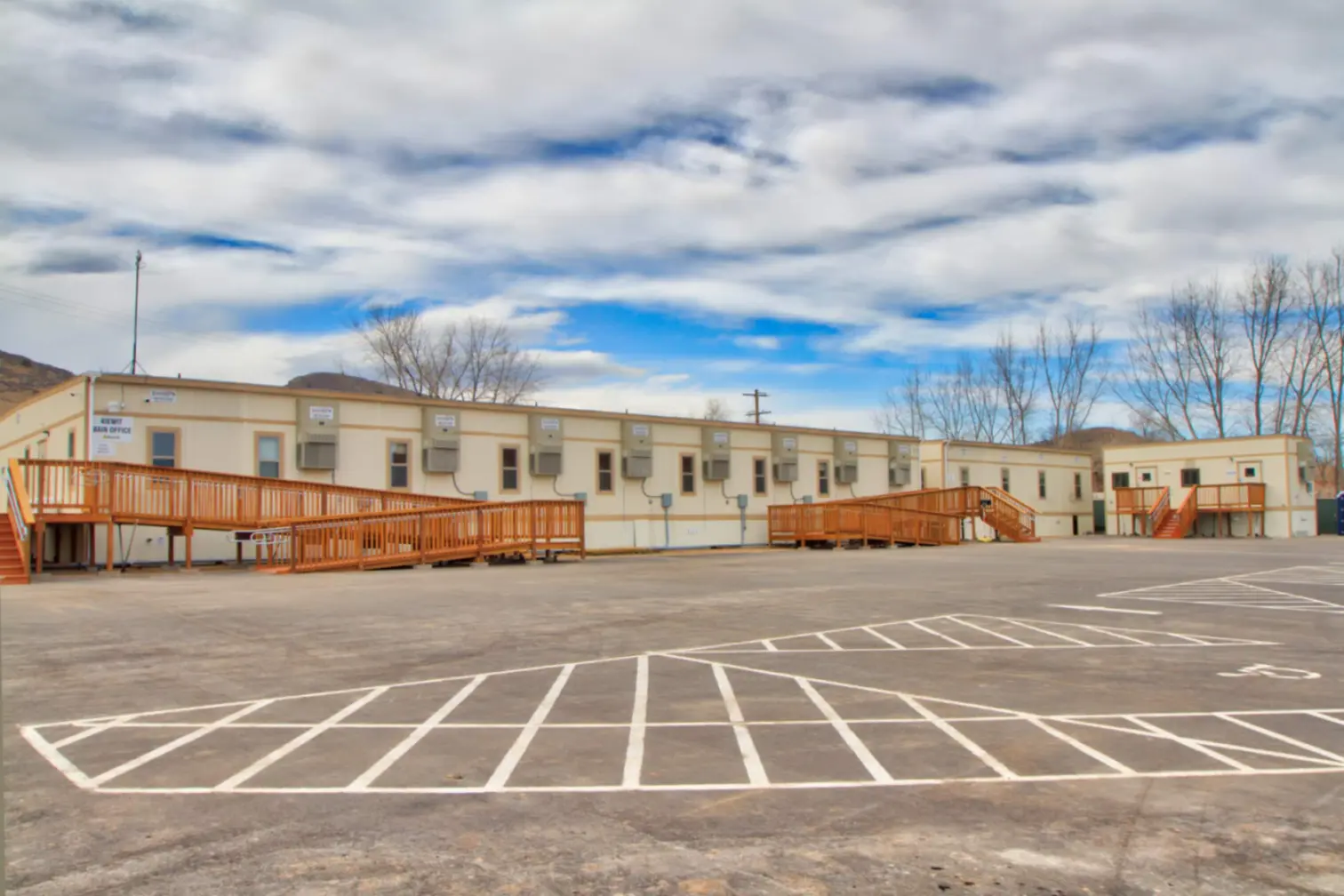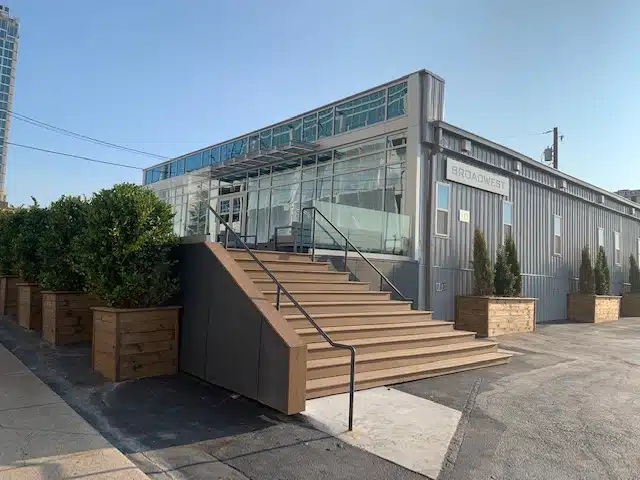
Are you interested in learning about the growing popularity of modular buildings and how they contribute to sustainable construction? You’re not alone! Real estate developers and environmentally conscious builders are increasingly turning to modular construction because of its efficiency and positive environmental impact.
This blog post will delve into the concept of modular buildings, discussing in detail the benefits of energy-efficient modular homes and providing practical advice on integrating sustainable designs. Get ready to uncover why modular buildings are revolutionizing sustainable construction and changing the real estate landscape with green efficiency.
What Is a Modular Building?
Modular buildings are structures built off-site in a factory setting before being transported and assembled at their final location. Unlike traditional construction, which involves building from the ground up on-site, modular construction allows for the creation of building modules in a controlled environment. These modules can then be pieced together to form a complete building.
This method has been gaining traction due to its numerous benefits. For starters, modular construction significantly reduces construction time. Since modules are built simultaneously with site preparation, projects can be completed in nearly half the time compared to traditional methods. Additionally, modular buildings offer high levels of quality control, as each module is built to exact specifications in a factory setting.
The Growing Popularity of Modular Buildings
The use of modular buildings is increasingly prevalent in modern construction practices, representing more than just a passing trend. Real estate developers are drawn to the cost-effective and time-efficient nature of these structures, while sustainable builders appreciate the positive impact on the environment. This growing trend is expected to continue, driven by the rising need for affordable buildings and the push toward more sustainable construction methods.
One of the most exciting aspects of modular buildings is their versatility. They can be customized to meet diverse needs, whether a ground-level office, S-Plex modular building, a custom modular office building, or a portable classroom. This adaptability makes them attractive for various commercial, and educational sections, sparking endless possibilities.
What’s the Difference Between a Modular Building and a Mobile Office?
Although they seem similar, a modular building and a mobile office are quite different—the main difference between the two lies in their intended use and the level of customization planned. Modular buildings, like the s-plex, are suitable for permanent or semi-permanent, customizable structures, while mobile offices are ideal for temporary, easily transportable workspaces. Understanding these differences is essential for making the right decision for your needs.
Green Advantages of Energy-Efficient Modular Buildings
Energy-efficient modular buildings are specifically designed to minimize energy consumption and shrink the overall carbon footprint. These innovative structures integrate environmentally friendly building materials and cutting-edge technologies for optimal energy efficiency. Modular buildings can significantly reduce energy costs and greenhouse gas emissions by harnessing renewable energy sources and incorporating efficient insulation.
In addition to their impressive energy efficiency, modular buildings offer a substantial environmental advantage by minimizing waste.
Unlike traditional construction methods that frequently result in significant material wastage, the modular construction process takes place in a controlled factory environment, allowing for precise measurement and cutting, ultimately reducing waste. Leftover materials are more likely to be recycled or repurposed, further contributing to waste reduction and sustainability.
Economic Advantages of Energy-Efficient Modular Buildings
Real estate developers can significantly benefit from incorporating energy-efficient modular buildings into their projects. These modern construction methods offer economic advantages and contribute to sustainable development.
By utilizing energy-efficient modular buildings, developers can reduce construction time, leading to quicker project completion and faster returns on investment. Moreover, the controlled environment minimizes the risk of construction delays due to weather or other unforeseen circumstances, providing a more predictable and streamlined building process.
Furthermore, energy-efficient modular buildings bring long-term savings to developers and occupants through reduced utility bills. Integrating high-performance insulation and energy-efficient systems allows for decreased energy consumption for heating and cooling purposes. These cumulative savings make energy-efficient modular buildings a cost-effective and environmentally friendly option.
Design and Construction Aspects of Energy-Efficient Modular Buildings
The design and construction of modular buildings play a crucial role in their energy efficiency. Architects and engineers work together to create designs that maximize natural light and ventilation, reducing the need for artificial lighting and air conditioning. Proper orientation and window placement can significantly impact a building’s energy performance.
Innovative construction techniques enhance energy efficiency, such as prefabricated panels with built-in insulation. These panels provide superior thermal performance, keeping the interior temperature stable and reducing the need for mechanical heating and cooling. Plus, using low-emissivity (Low-E) windows helps to minimize heat transfer, contributing to overall energy savings.
Sustainable Modular Construction Practices
Sustainable modular construction is a multifaceted approach beyond just focusing on energy efficiency. It involves a comprehensive outlook on constructing buildings that consider the entire life span of the structure. This approach entails using sustainable materials, minimizing waste, and implementing practices with minimal environmental impact. By embracing these sustainable practices, builders can develop modular buildings that are genuinely environmentally friendly.
One compelling example of sustainable modular construction is the incorporation of recycled materials. Numerous modular builders are now integrating recycled steel, wood, and other materials into their designs. This lessens the demand for new resources and enables builders to play a significant role in diverting waste from landfills, thus making a real and positive impact on our environment.
Practical Tips for Incorporating Energy Efficiency in Modular Building Designs
For those looking to incorporate energy efficiency into their modular building projects, here are some practical tips:
- Choose sustainable materials. Opt for renewable, recyclable materials and have a low environmental impact. Look for certifications like LEED or Energy Star to ensure the materials meet high sustainability standards.
- Optimize building orientation. Design your modular building to take advantage of natural light and ventilation. Proper orientation can significantly reduce the need for artificial lighting and mechanical cooling.
- Invest in high-performance insulation. Use insulation materials with high R-values to improve thermal performance. This will help maintain a stable indoor temperature and reduce energy consumption.
- Install low-E windows. Low-emissivity windows minimize heat transfer, keeping the interior cooler in summer and warmer in winter, leading to significant energy savings.
- Incorporate renewable energy sources. Consider adding solar panels, wind turbines, or other renewable energy sources to your modular building. This can offset energy consumption and reduce reliance on nonrenewable resources.
- Use advanced HVAC systems. Invest in energy-efficient heating, ventilation, and air conditioning systems. These systems can provide superior climate control while using less energy than traditional systems.
Go Green With an Energy-Efficient Modular Building Rental From Satellite Shelters
Energy efficiency in modular buildings is not just a trend—it’s the future of sustainable construction. By understanding the benefits and incorporating best practices, real estate developers and sustainable builders can create high-performance modular buildings that are environmentally friendly and economically viable.
The growing popularity of modular buildings and advancements in energy-efficient design and construction make this an exciting time for the industry. Adopting these practices can contribute to a greener, more sustainable future.
Are you ready to take the next step in sustainable construction? Consider partnering with Satellite Shelters for your next modular building project or rental. Whether you need ground-level offices for short-term temporary use or an s-plex portable classroom, we offer a range of energy-efficient solutions to meet your needs.
Explore our extensive case studies, comprehensive FAQ page, and helpful blog for more details.





